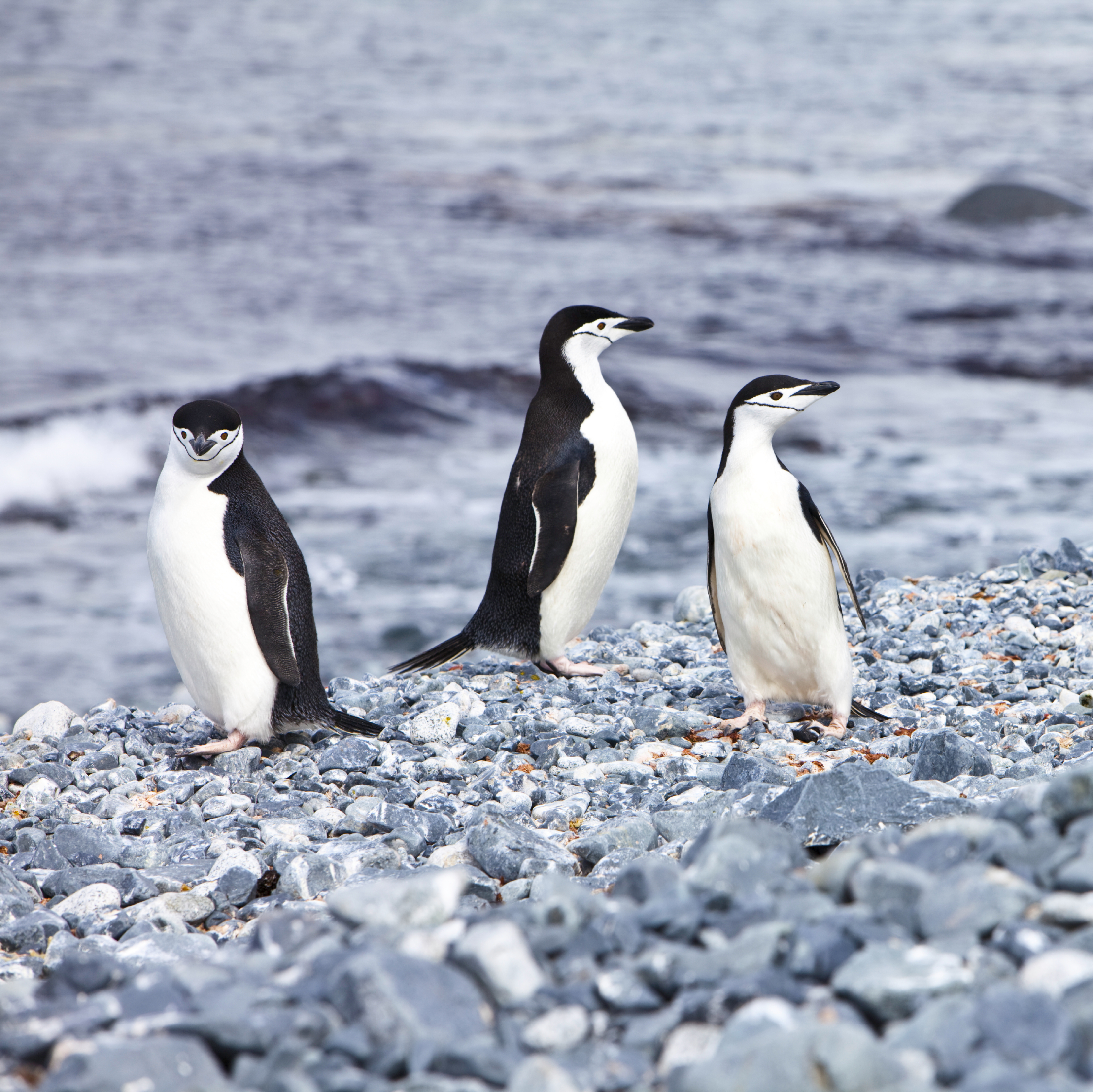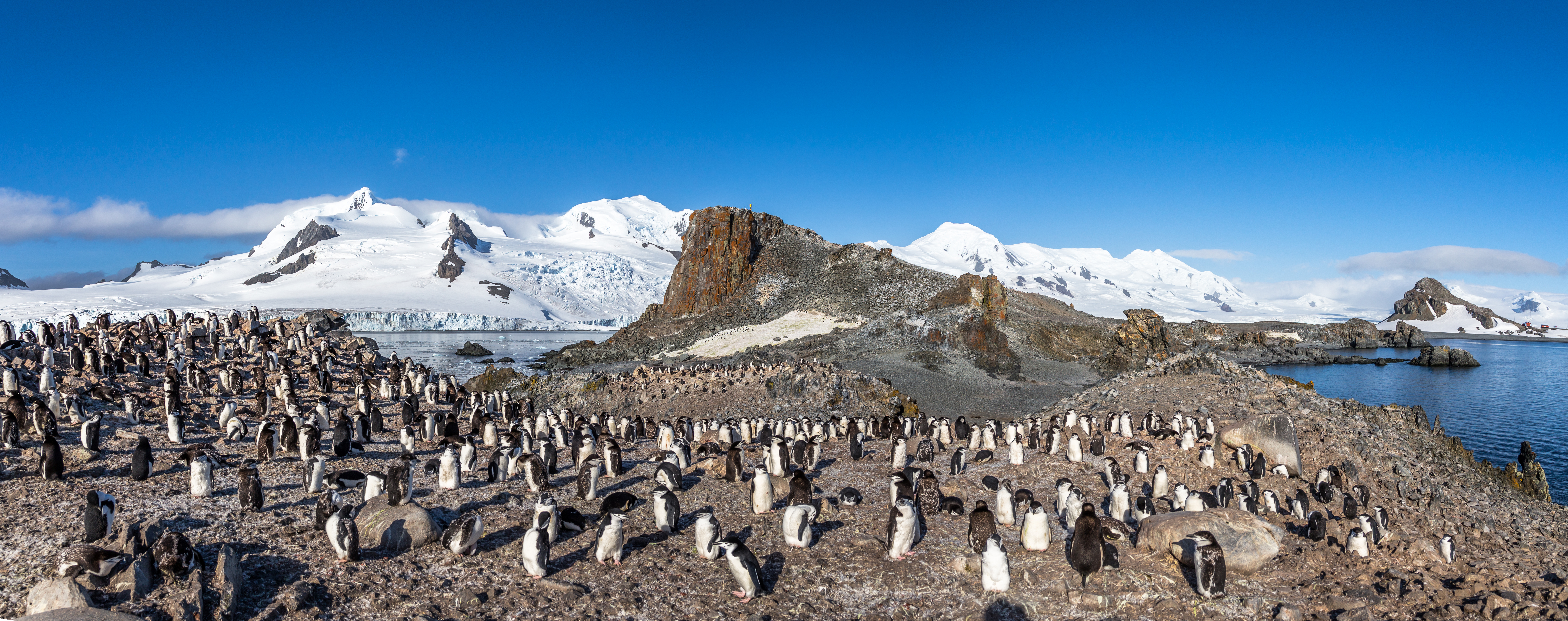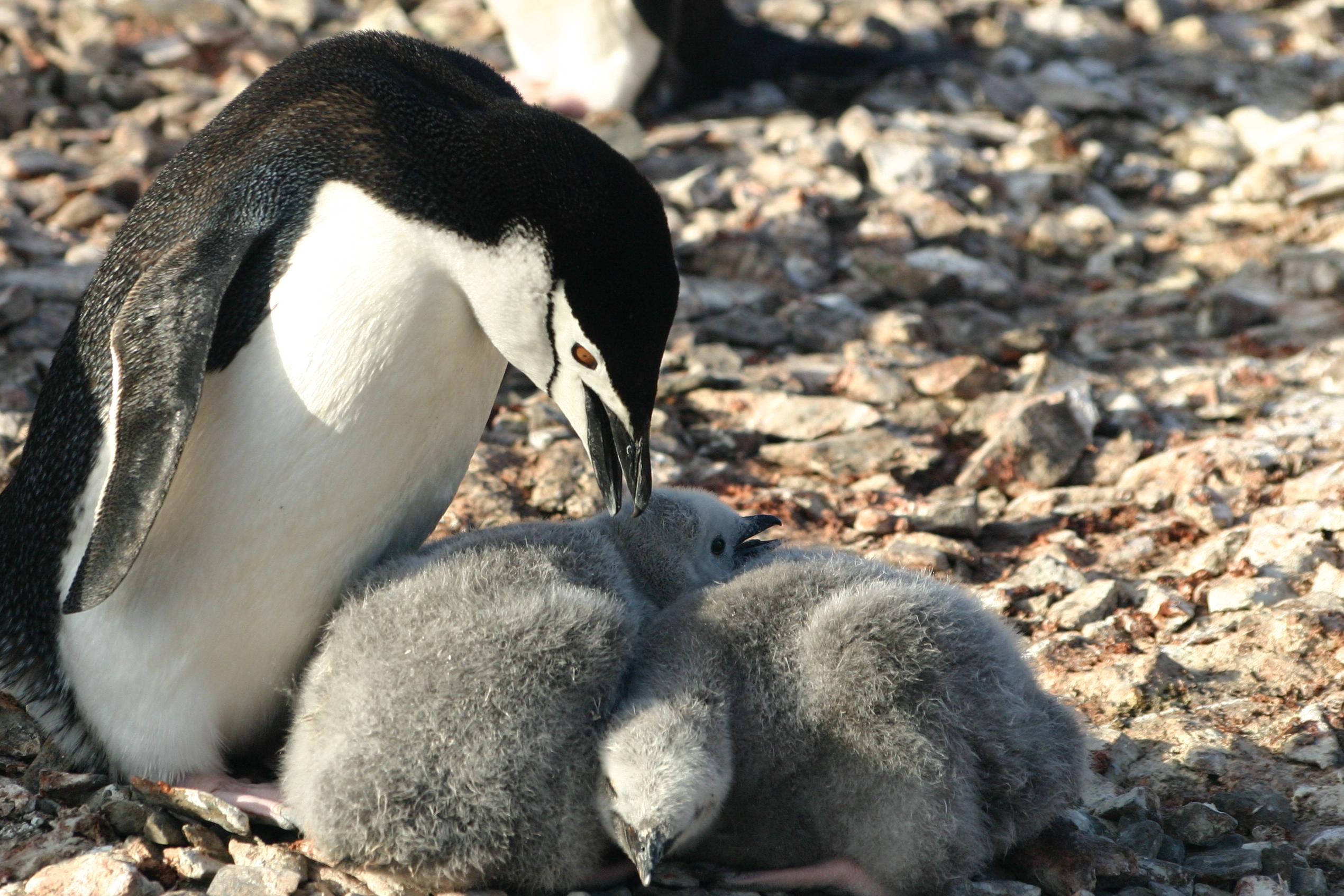Chinstrap penguin is a medium-sized penguin known for the black band under its chin. The band looks like the chin strap of a hat or helmet. Chinstrap penguins are the smallest of the three brush-tailed penguins. Brush-tailed penguins are known for their long tail feathers. The other brush-tailed penguins are the Adélie and gentoo penguins.

An adult chinstrap penguin may weigh from 8 to 12 pounds (3.6 to 5.4 kilograms). Males are a little larger than females. The upper parts of a chinstrap’s body, including the head and upper side of the flippers, are black. Its face and the underside of the body and flippers are white. The black “strap” stretches from ear to ear. The beak is black. A chinstrap penguin has reddish-brown eyes and pink feet.
The chinstrap penguin eats mainly tiny sea creatures called krill. But it occasionally eats other crustaceans (animals with a shell and segmented legs) and fish. Chinstrap penguins are excellent divers, but they generally dive to no more than 145 feet (45 meters). Their main predators on land are giant petrels and skuas, two types of sea bird that eat penguin eggs and chicks. At sea, chinstrap penguins may be preyed on by leopard seals, which often patrol the beaches near penguin colonies. Many populations of chinstrap penguins have declined in recent years, possibly because they could not find enough krill.

Chinstrap penguins live and breed mainly on the Antarctic Peninsula. Their colonies can be enormous, with millions of breeding pairs. Pairs often mate for life. Each year, in early October through November, these penguins start to return to their breeding colonies. A female usually lays two eggs there in late November. The chicks hatch in about 35 days. They are covered in silver gray down (soft feathers). The down darkens when the chicks reach 2 to 3 weeks old. Chicks grow quickly. When they are 7 to 8 weeks old, they start to lose their down and grow adult feathers.

While the adult penguins prepare for their molt (shedding of old feathers), the young penguins leave the colony and start to explore the Southern Ocean. After the molt season, adult chinstraps leave their colonies for the winter. They likely migrate north of the pack ice (vast expanse of frozen seawater) and stay at sea until the next spring. Adults may migrate 1,200 to 2,500 miles (2,000 to 4,000 kilometers) from their colonies.
